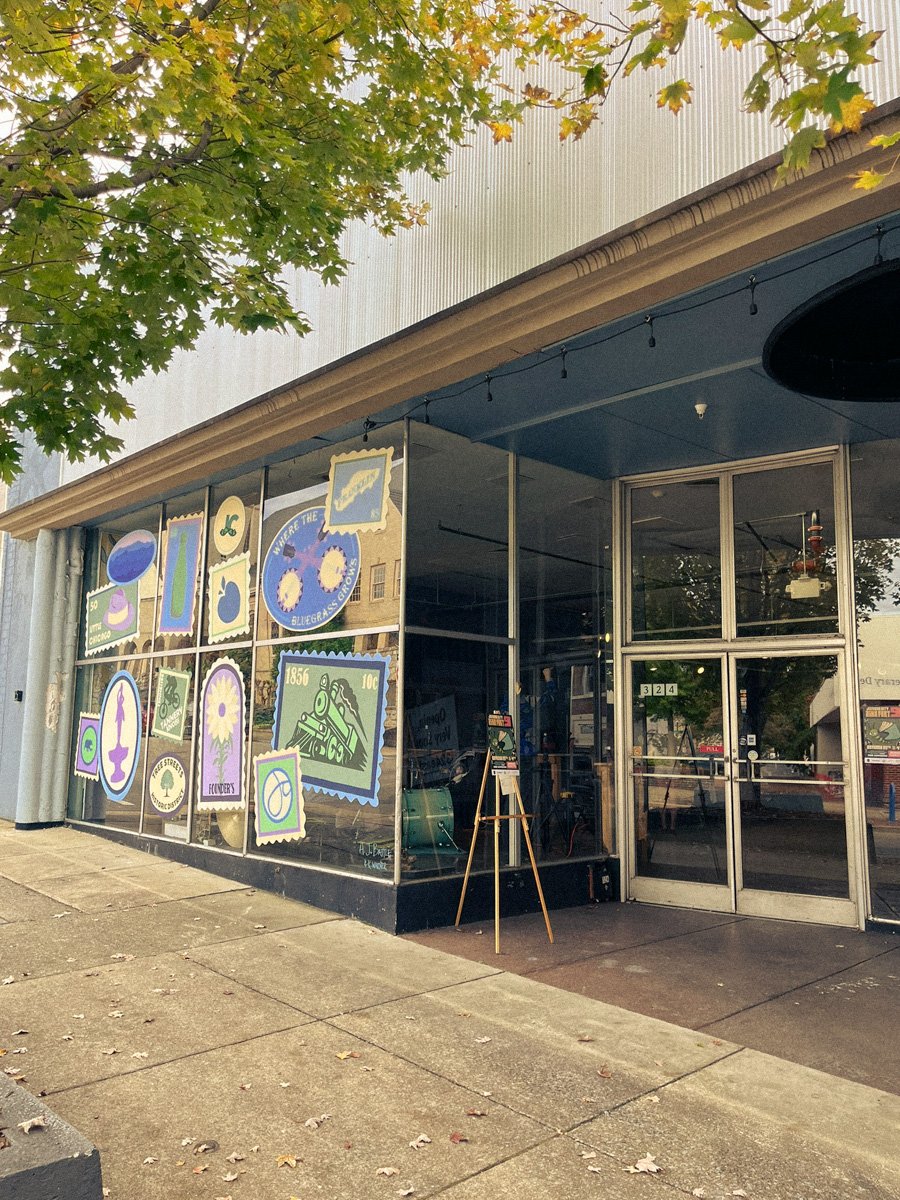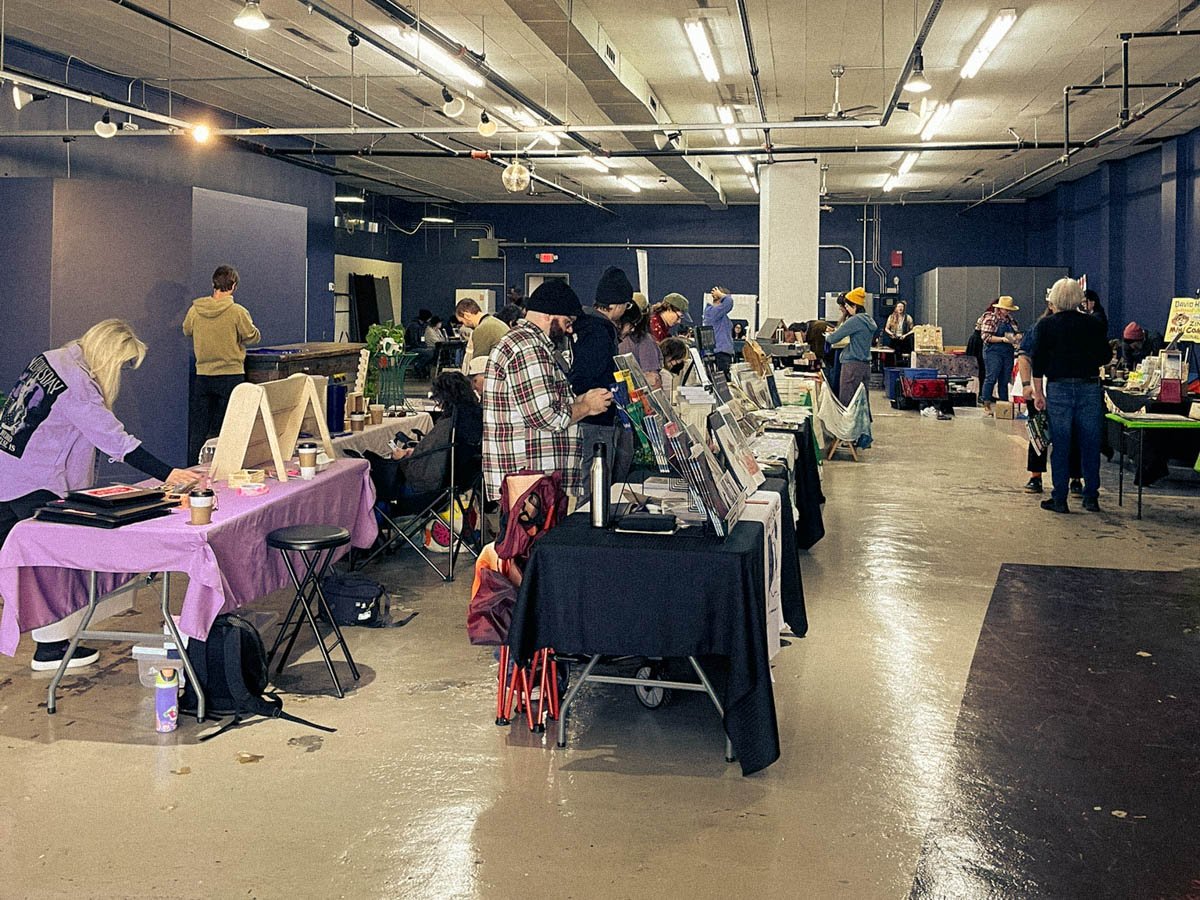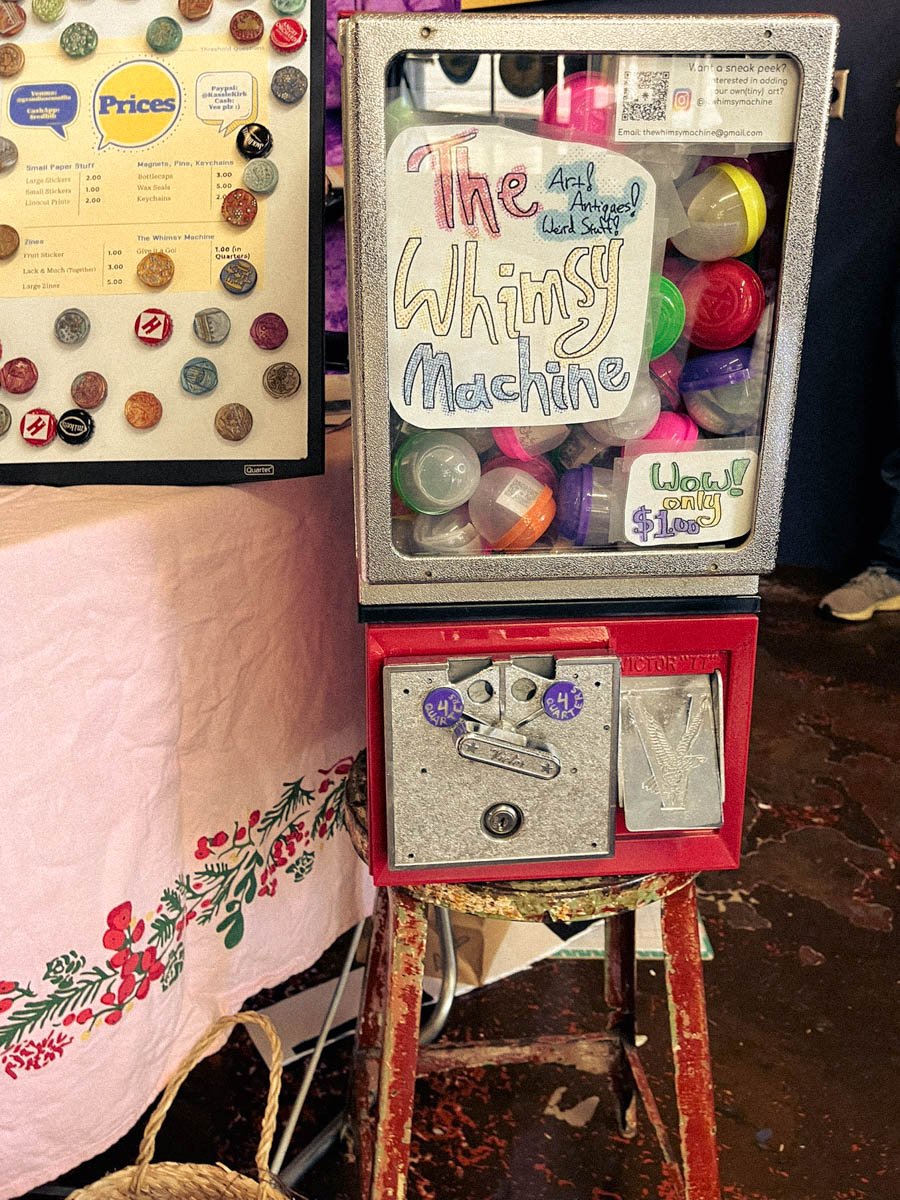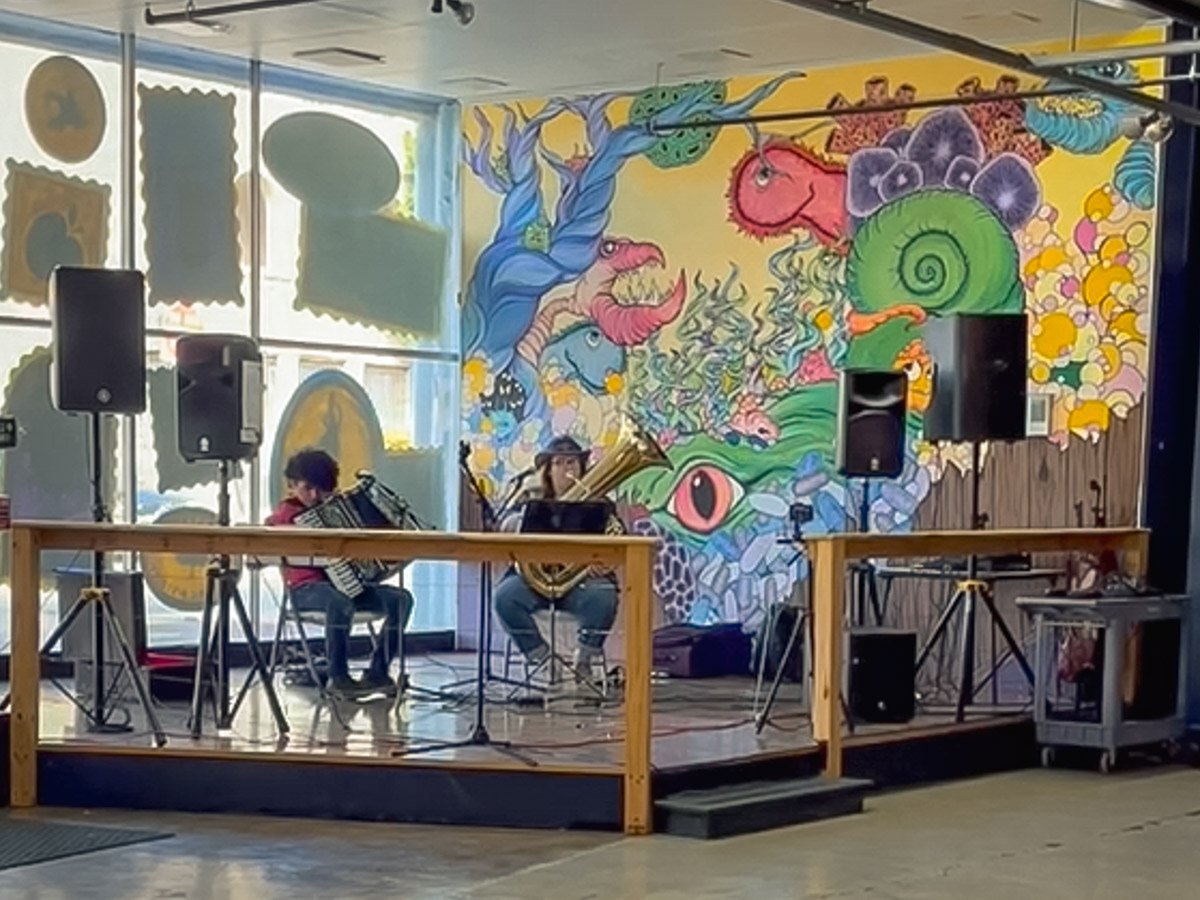I’d been looking forward to the Johnson City Zine Fest since June, when I first heard about it and sent in my application in July. It became the bright pin on my calendar all through summer—a goal that kept me printing, folding, trimming, and imagining how my stories might look out in the world instead of just on a screen.
When I arrived—fifteen minutes before the event organizer—I was already a little anxious about parking. Rightfully so, it turned out. The nearest public lots were a couple of blocks away, and I didn’t want to haul a table, chair, and a tote full of zines and displays down Main Street. Luckily, I found an open spot right at the end of the block. The air was crisp and cool, dry and bright. A good omen for a fall festival.

324 Main is one of those old brick buildings that still carries the memory of busier decades. It went up in 1940, back when the downtown district was a proper rail stop and the storefronts glittered with department-store windows. These days, the ten-thousand-square-foot space hosts business meetings and parties, but the bones of the old town are still there.
I was the first one in, greeted by Dick Nelson, the building’s owner, who let me unload before anyone else arrived. My table ended up near the entrance, in a patch of natural light by one of the big plate-glass windows—right where the foot traffic naturally flowed. Behind me, the top half of one wall still showed the original brick where the drywall had been cut away, whitewashed but imperfect, like an old story that had been edited but never erased. It felt right—a storytelling corner inside a larger room.
Setup took just over thirty minutes, a major improvement from the marathon that was the Storytelling Festival. The banner, as usual, took the longest. It’s only four feet wide, but attaching it to the front of a cloth-covered table had once been a puzzle. This time, a pair of heavy clips and a loop of velcro did the trick. Velcro, I’ve decided, deserves its own award for ingenuity.

The event officially started at eleven, though the first curious visitors slipped in early. My excitement wasn’t about sales—it was the quiet thrill of watching someone stop, read, and actually see the stories I’d brought.
Between conversations, I wandered the aisles, admiring displays. My neighbor to the left had a clever vintage setup: an old 1960s suitcase propped open, the lid strung with zines clipped to twine, and the base lined with a cloth-covered board of neatly arranged titles. She even had a retro candy machine that dispensed toy capsules filled with tiny zines and stickers—tokens for a dollar. I loved that touch of play.

Visitors came in waves. Some stopped to chat about writing or illustration styles; others simply scanned the table and moved on. Most eyes landed first on Magical Appalachia: The Calling, perched at the top of the display rack. Few seemed drawn to the sticker packs, which made me question the late-night scramble to finish three new designs the week before. Maybe that energy would have been better spent on another illustrated zine. I also noticed people focused more on the left side of the table—the side with colorful covers—while the white, minimalist chapbooks on the right went mostly untouched.

A few hours in, I realized I’d forgotten how to sell. It was difficult to talk with the music playing, and I’d fallen silent, waiting for people to speak first. So I borrowed a trick from the Storytelling Festival and started asking questions: Do you like short stories? Have you ever made a zine? That’s when everything changed. Faces lit up. People told me about the stories they’d started but never finished, or how they’d always wanted to try making a zine. I handed out my freebie mini-zine What Is a Zine? and told them they could start with just one sheet of paper. Watching the idea click—that they could do this too—was the best moment of the day.
One man said he wasn’t a creator but a collector; his goal was to buy one zine from every table and then spend the evening reading them all in bed. Another picked up Catch a Story and said the watercolor artwork drew him in. That comment stuck with me. I’d been pushing to make a new zine every week, worrying more about schedule than craft. His words reminded me that slowing down might lead to deeper work.

By the end of the day, I’d traded stories and zines with other creators, swapped stickers, and filled my bag with inspiration. I wish more visitors had brought zines to trade, though many didn’t know they could. I would have loved to swap zines with them.
What I’ll carry forward:
More color. More curiosity. More conversations.
Maybe next year, the trades will multiply, and we’ll all go home with a little more story in our pockets. I’m already looking forward to it. Stories stay alive when they’re handled and shared.
You can find some of the zines, chapbooks and stickers from my table in the Studio Second Street shop.




